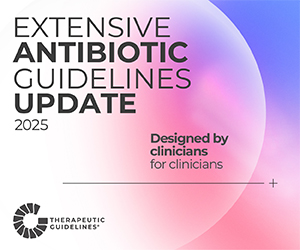The World Health Organization (WHO) defines elder abuse as “a single or repeated act, or lack of appropriate action, occurring within any relationship where there is an expectation of trust, which causes harm or distress to an older person.”1
Abuse can be financial (manipulation of financial decisions, seizing of assets), psychological (threats, name-calling, belittling), social (isolation from social networks), physical/neglect (harm from purposeful action or inaction), sexual (including sexual harassment), and chemical (inappropriate use of prescribed or non-prescribed medication).1,2 Elder abuse can be perpetrated by family, friends, neighbours, or others such as healthcare or other staff.
One in six (15%) elderly Australians will experience abuse in the community,3 and the Royal Commission into Aged Care Quality and Safety estimates that 39.2% of elderly Australians living in nursing homes will experience elder abuse.3 Alarmingly, elder abuse is thought to be more common than statistics suggest due to inconsistent reporting, lack of a national reporting framework, and knowledge that many cases go unreported due to powerful barriers, such as shame, that prevent victims and witnesses from disclosing abuse.4
Beyond acute harm and distress, elder abuse results in dire outcomes such as premature death, increased healthcare resources use (e.g., increased hospitalisation rates and emergency department visits), and many long-term impacts including mobility impairments, depression and anxiety, and social dysfunction.5
Elder Abuse in the Community
Psychological and verbal abuse are the most common forms of elder abuse in the community, which is likely a result of persistent and widespread agism.6 Ageism can lead to people overlooking or diminishing the severity of actions that would otherwise be considered abusive because of the victim’s age or dependency on others.7 Ageism can also result in reduced likelihood of reporting abuse in comparison to the abuse of other groups, such as children.
Elder abuse is often intergenerational, such as where a parent is abused by their adult child.8 Cases are also often financially motivated and can involve pressure for gifting money or assets, shaming to move into care, or unmet promises to take care of the older person if they transfer assets to the child’s name.1,9 Abuse is also often associated with the older person feeling shame or guilt, as they might view the perpetrator’s actions as a result of their own failure, or feel shame for allowing the abuse to continue.9,10 The older people might also be afraid of losing or damaging relationships with their abuser/s or other family members, and while they want the abuse to stop they want their relationships to continue.10
Community-level interventions to address elder abuse include training frontline staff to identify, respond to, and report elder abuse,11 outreach centres,12 money management programmes,1 and education to reduce stigma surrounding reporting elder abuse and ageism, to improve community members’ understanding of elder abuse.
Elder Abuse in Residential Aged Care
The Royal Commission into Aged Care Quality and Safety highlighted how Australia’s aged care system has long failed to meet the needs of older people.13 Recent sector-wide reforms addressing the Commission’s recommendations are promising, however, institutional elder abuse, particularly neglect born from a lack of adequate staffing and resources are still too common. Further reforms and legislation are required to address institutional elder abuse and to ensure that older Australians are provided with safe, dignified, and high-quality health and personal care.
Due to high prevalence of cognitive disorders, dementia, mobility issues, and chronic and multi-morbid conditions that result in a high degree of dependency, nursing home residents are particularly vulnerable to abuse. Many nursing home residents don’t report abuse due to their dependence on aged care staff. Further, cognitive declines including dementia can compromise a person’s ability to recognise abuse. The responsibility, therefore, often falls to staff, family members, and the wider community to recognise, respond to, and report observed or suspected abuse.
Recognising Elder Abuse
Recognising signs of elder abuse can be difficult as actions that constitute abuse can be conceptualised differently. Some people might also discount the abuse due to perceptions that the actions are ‘in the best interest of the older person’.14 While elder abuse may be challenging to identify, it is important that any suspected abuse is appropriately responded to and reported. Signs of an older person who is suffering from abuse include; being depressed, confused, or withdrawn; isolating from others; having unexplained bruises or other injuries; appearing unclean, dehydrated, or underfed; having preventable bed sores; and, recent changes in banking or spending patterns.15
Reporting Elder Abuse
The ANMF’s Position Statement on compulsory reporting of abuse in aged care settings for nurses and assistants in nursing is a useful resource. As no national framework exists for reporting elder abuse, anyone who witnesses or suspects elder abuse should contact the 1800 ELDERHelp phoneline which automatically redirects to your state or territory service. If the situation is immediate or life threating, you should contact triple zero (000). For staff, any abuse should be immediately reported to a supervisor. Where the supervisor is the abuser, a report should be made to the Aged Care Complaints Commissioner.
Conclusion
With a growing population of older people, elder abuse is also projected to rise. This means that those working in the health and aged care sector, and the wider community are increasingly likely to come across instances of elder abuse. It is important that staff and the community be educated to understand the severity of elder abuse, know the signs that indicate an older person is being abused, and be able to report elder abuse with appropriate whistle-blower protections.
The lack of consensus on the definition of elder abuse among Australian health professionals,16 and the absence of a national legislative framework to address elder abuse highlights where government could improve and speed the implementation of necessary reforms to better prevent and address the abuse of older Australians. The ANMF is actively involved in efforts to combat and respond to elder abuse including through partnering with leading researchers at several universities and healthcare organisations around Australia in a project led by the National Ageing Research Institute (NARI) and participation in Elder Abuse Action Australia’s (EAAA) work to refine a new National Plan to Respond to the Abuse of Older Australians.
References
-
Health Organization. Abuse of older people [Internet]. WHO; 2022. [cited 2023 Sep 22]. Available from: https://www.who.int/news-room/fact-sheets/detail/abuse-of-older-people
-
Australian Law Reform Commission. What is elder abuse? [Internet]. ALRC; 2016. Available from: https://www.alrc.gov.au/publication/elder-abuse-ip-47/issues-paper-4/what-is-elder-abuse/.
-
Qu L, Kaspiew R, Carson R, et al. National elder abuse prevalence study. Melbourne (AU): Australian Institute of Family Studies; 2021.
-
Kaspiew R, Carson R, Rhoades H. Elder abuse: Understanding issues, frameworks and responses: Melbourne (AU): Australian Institute of Family Studies; 2016.
-
Yunus RM, Hairi NN, Choo WY. Consequences of elder abuse and neglect: A systematic review of observational studies. Trauma, Violence, & Abuse. 2019;20(2):197-213.
-
Yon Y, Ramiro-Gonzalez M, Mikton CR, Huber M, Sethi D. The prevalence of elder abuse in institutional settings: a systematic review and meta-analysis. Eur J Public Health. 2019;29(1) 58-67.
-
McDonald L. Stereotyping and prejudice against older persons. The MIT Press; 2017. Ageism and elder mistreatment: Talking the talk but not walking the walk.
-
Kaspiew R, Carson R. Elder abuse in Australia. Fam Matters. 2016; (98): 64-73.
-
National Research Council (US) Panel to Review Risk and Prevalence of Elder Abuse and Neglect. Elder Mistreatment: Abuse, Neglect, and Exploitation in an Aging America. Bonnie RJ, Wallace RB, editors. Washington (DC): National Academies Press (US); 2003. PMID: 22812026.
-
Dow B, Gahan L, Gaffy E, Joosten M, Vrantsidis F, Jarred M. Barriers to disclosing elder abuse and taking action in Australia. J Fam Violence. 2020;35(8):853-61.
-
Yan E, To L, Wan D, Xie X, Wong F, Shum D. Strategies to build more effective interventions for elder abuse: a focus group study of nursing and social work professionals in Hong Kong. BMC Geriatrics. 2022;22(1):978.
-
Baker PR, Francis DP, Hairi NN, Othman S, Choo WY. Interventions for preventing abuse in the elderly. Cochrane Database Syst Rev. 2016;(8):Cd010321.
-
Royal Commission into Aged Care Quality and Safety. Interim Report: Neglect. Canberra (AU): Australian Government; 2019.
-
Radermacher H, Toh YL, Western D, Coles J, Goeman D, Lowthian J. Staff conceptualisations of elder abuse in residential aged care: A rapid review. Australas J Ageing. 2018;37(4):254-67.
-
National Institute on Aging. Spotting the signs of elder abuse [Internet]. NIH; 2023. Available from: https://www.nia.nih.gov/health/infographics/spotting-signs-elder-abuse.
-
Hempton C, Dow B, Cortes-Simonet EN, et al. Contrasting perceptions of health professionals and older people in Australia: what constitutes elder abuse? Int J Geriatr Psychiatry. 2011;26(5):466-72.
Authors:
Jarrod Clarke and Adjunct Associate Professor Dr Micah DJ Peters are based in the Australian Nursing and Midwifery Federation’s (ANMF) National Policy Research Unit (Federal Office) at the Rosemary Bryant AO Research Centre, Clinical and Health Sciences, University of South Australia. Micah also holds adjunct appointments at the University of Adelaide with Health Evidence Synthesis, Recommendations and Impact (HESRI) in the School of Public Health and the School of Nursing, Health and Medical Sciences.








